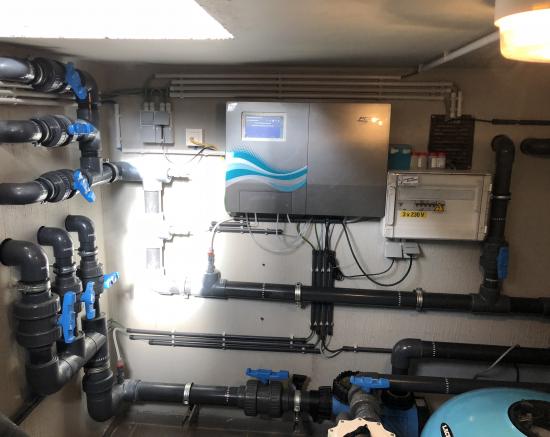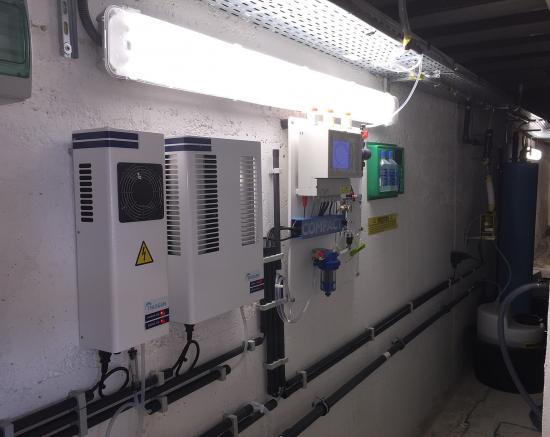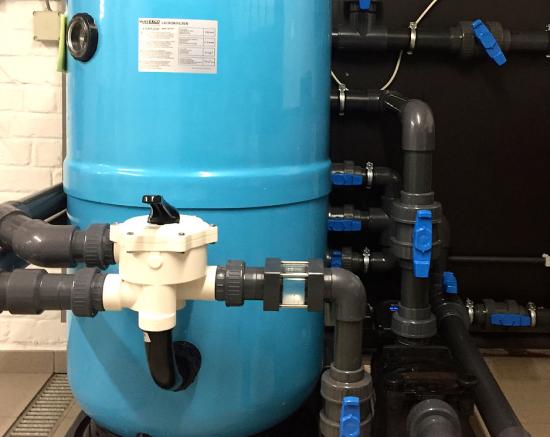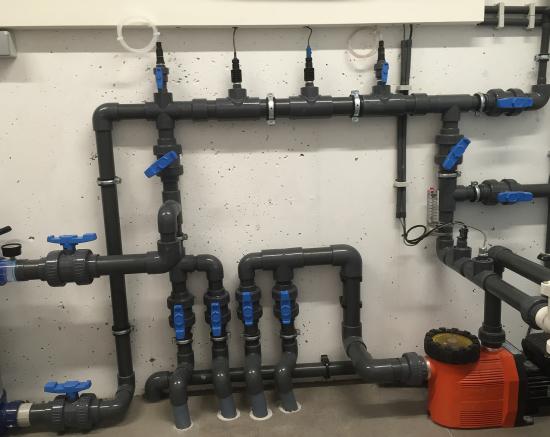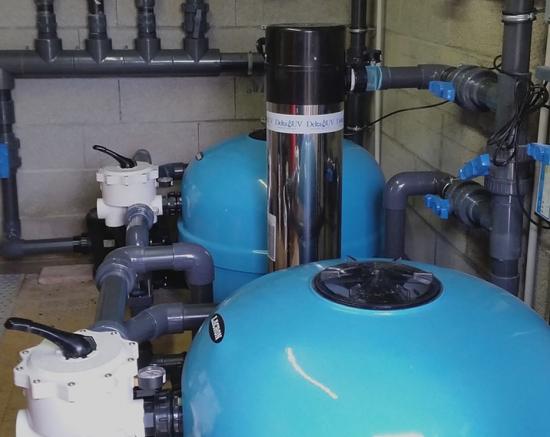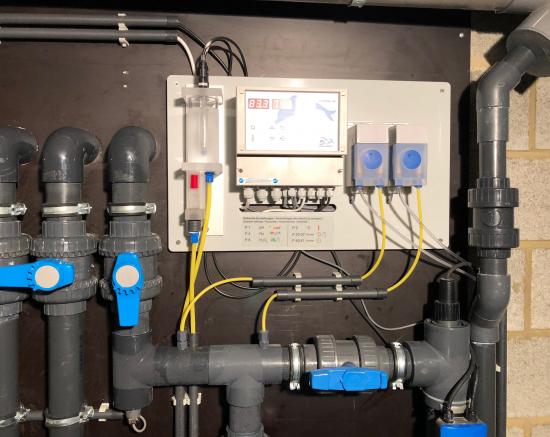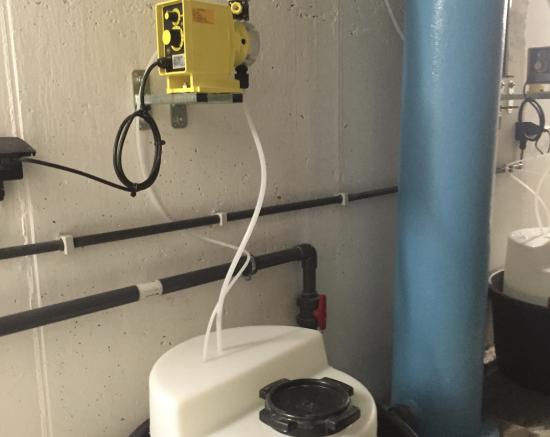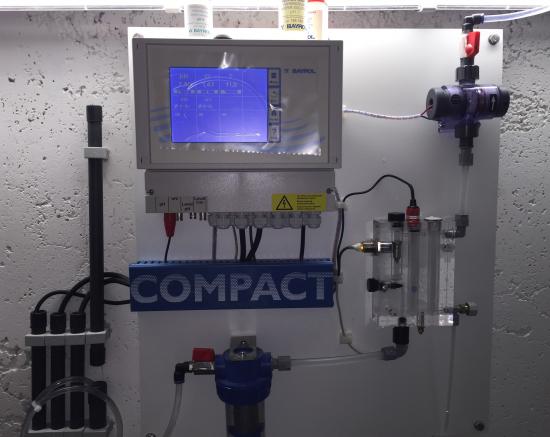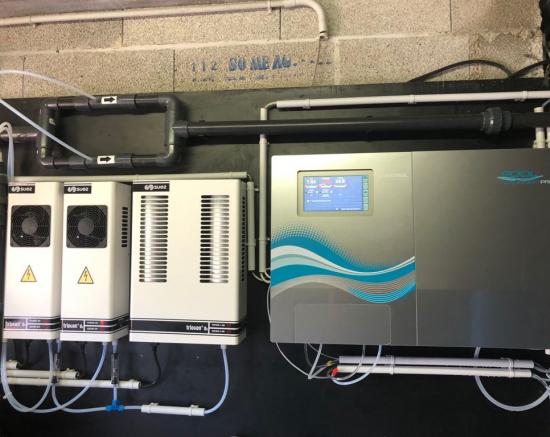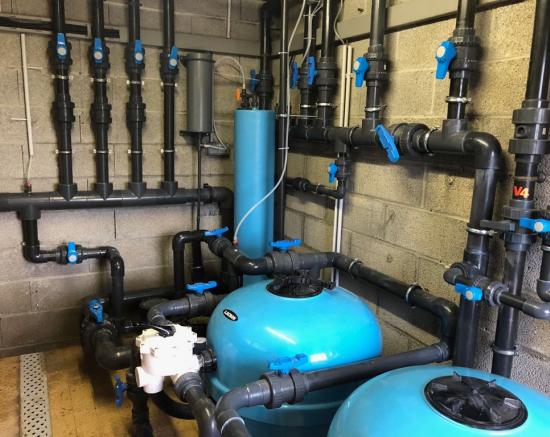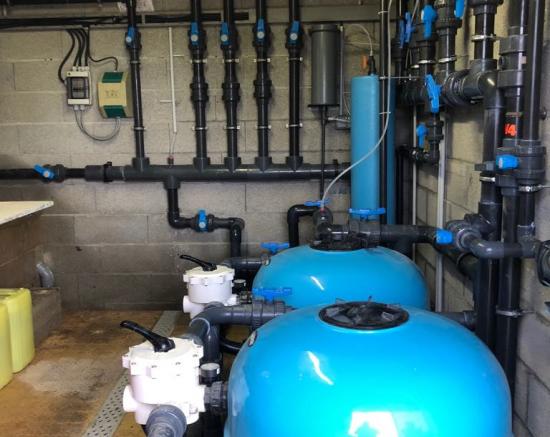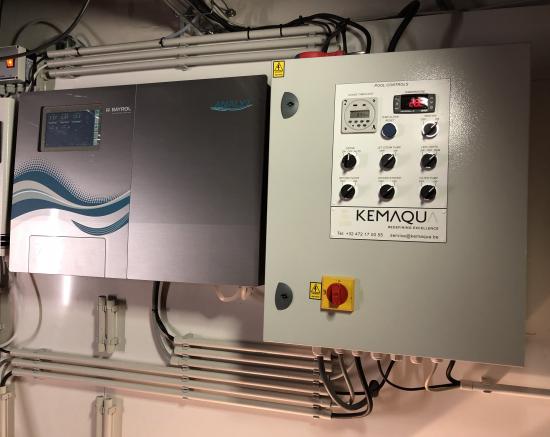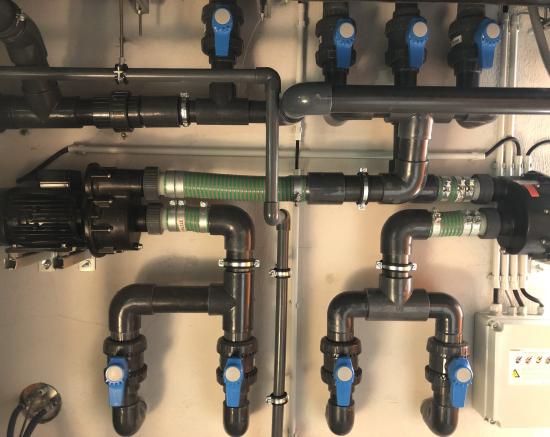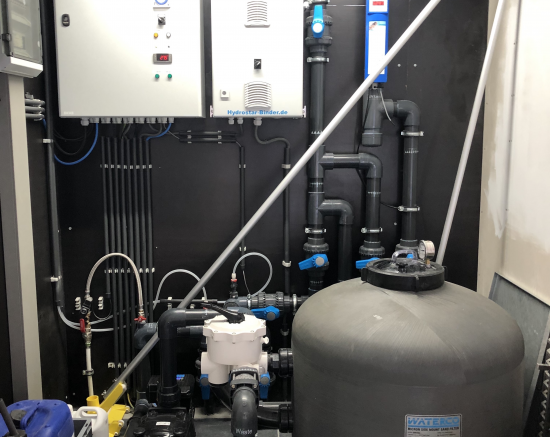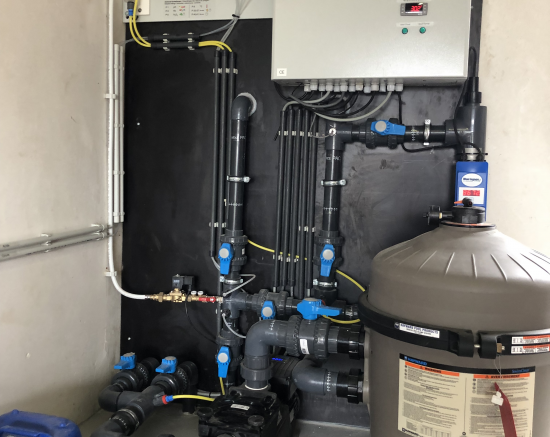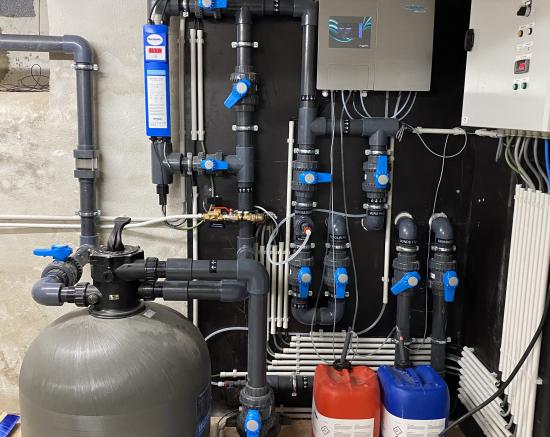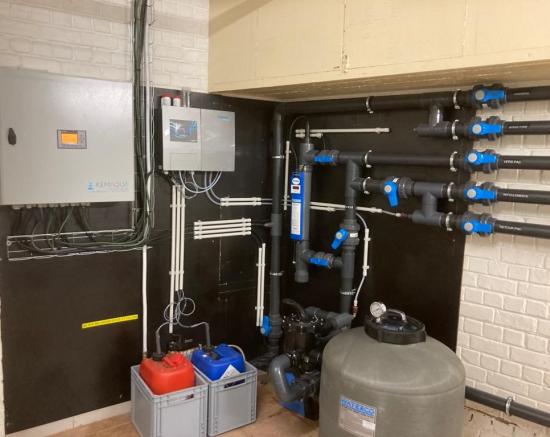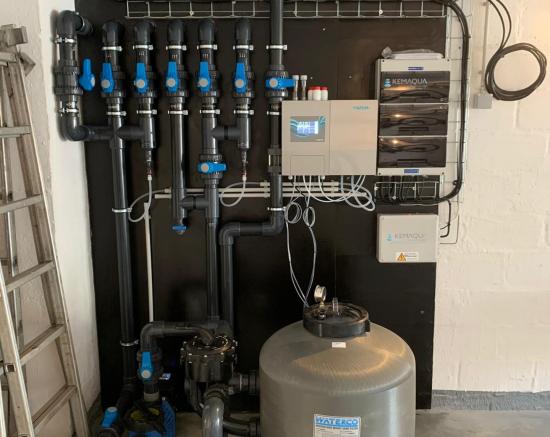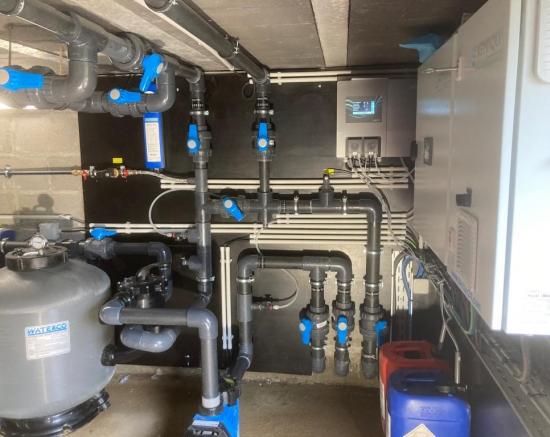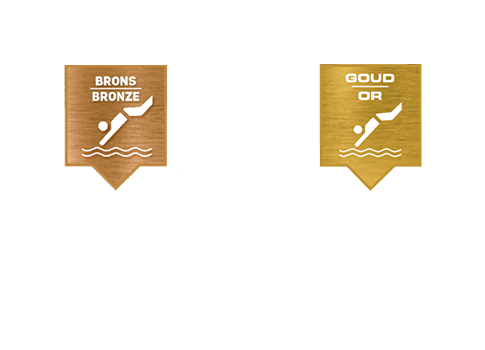AUTOMATIC CHEMICAL DOSING EQUIPMENT
These systems have been around for many years. The have proven their reliability and the effectiveness in maintaining a balanced pool water. These controllers monitor the essential parameters such as pH, Redox (electrical potential of the pool water combined with temparature to simulate chlorine levels) and/or free chlorine. The later being the most precise. The controllers then command dosing pumps, salt generators or other systems to adjust and maintain the water quality.
Advantages :
-
Remote controlling and logging
-
The chemical levels are maintained precisely without variations thus keeping chemical levels as low as required. Prevent over dosing, therefore up to 30% chemical savings.
-
They provide the possibility when combined with UV or Ozone to have low chlorine level in a pool
UV SYSTEMS
Most residential UV systems are low pressure lamps (254nm wave length) and therefore should be considered a secondary disinfection process, however used alongside a primary disinfectant, such as chlorine, there can be up to 80% in chemical savings.
Ultraviolet systems have also proven their reliability and effectiveness. These systems pass pool water through a chamber that is in contact with UV radiation. UV has a great capacity to reduce chloramines and fill microorganisms without leaving any residual chemicals in the pool. Thus making it an environmentally friendly solution.
OZONE
Ozone systems are also secondary disinfection solutions. Ozone is produced on site by a unit that splits the oxygen molecule (O2) to create Ozone (O3) that is then mixed and dissolved into the pool water. Ozone is a very powerful disinfectant that is hundreds of times more powerful and effective than chemical treatments such as chlorine. Unfortunately Ozone has a very short life cycle before it reverts back to oxygen.
Advantages:
-
Kills chlorine resistant micro organisms in milliseconds
-
Reduces chloramines
-
Crystal clear water properties
-
Very effeccctive against organic pollution
-
Reduces chemical consumptions like UV systems
-
Low maintenance costs
These systems however are quite costly and require additional space in the filter room. They are also very effective when comined with an automatic dosing system.
SALT WATER GENERATORS
Salt water generators have become very popular, especially in warm countries. Salt (sodium chloride) is added into the pool. A chlorine generator uses electrolysis to produce hypochlorous acid (HCIO) and sodium hypochlorite (NaCIO), which are the sanitising and oxidising agents already commonly used in swimming pools. More expensive models provide a Redox and pH controller that permit a proper water control. Manufacturers of pool covers do not guarantee their stainless steel components when salt chlorination is used

